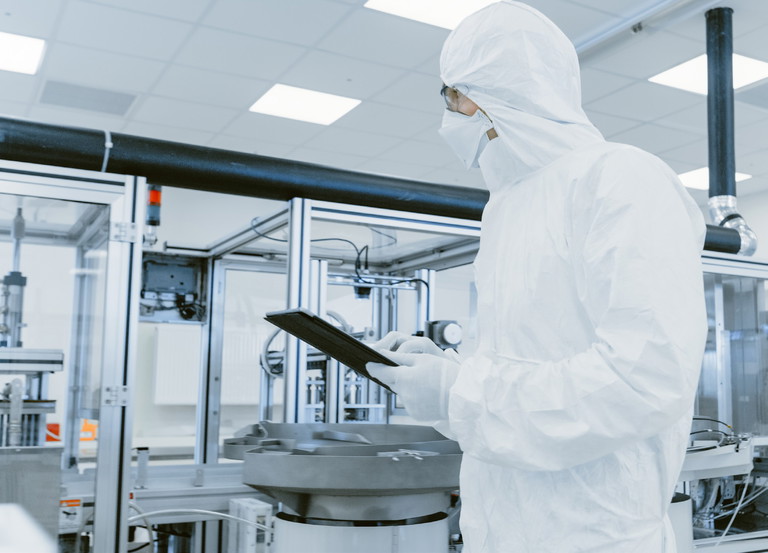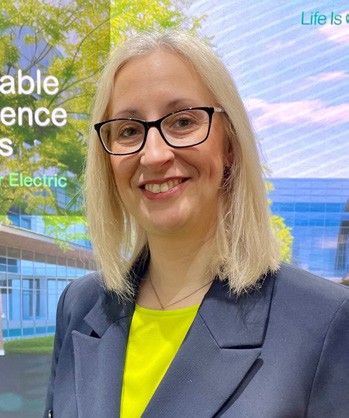Manufacturing: Environmental Monitoring Systems
The regulatory headache: advanced monitoring technologies can provide pain relief
Focusing on regulation within pharmaceutical manufacturing can help re-centre a company’s priorities, while ensuring compliance. This can be aided by the use of advanced monitoring techniques
Vicki Pearson at Schneider Electric
Life sciences companies are operating in a fiercely competitive and heavily regulated industry. Unsurprisingly, regulators have high expectations and require reports that are comprehensive and accurate. If organisations fail to satisfy their stringent requirements, they risk not only scrutiny and potentially hefty fines, but also open themselves up to wider reputational damage.
The US Food and Drug Administration (FDA) is heavily involved with regulating many life sciences organisations, and demonstrating compliance with its standard can quickly become a headache if data is not readily available. For example, section 21 CFR Part 11 defines criteria under which electronic records and electronic signatures are considered trustworthy and reliable, and requires organisations to retain audit trails and have documentation linked to training, validation procedures, methods of operation and much more available for inspection upon request.1
What could possibly require such extensive reporting?
The critical variabilities involved in manufacturing processes are often the reason for such intensive reporting. Critical variabilities that often need to be traced and validated can include:
• Temperature
• Pressure
• Humidity
• Organic contaminates
• Non-organic contaminates.
The fear of repercussions from late or inadequate reporting across operations can keep business leaders up at night.
The impact of regulatory fines and the potential delays caused by investigations, or the forced halting of processes, can all have negative impacts on business stability and client satisfaction. The pressure on businesses to deliver can feel overwhelming, and deciphering how to fulfil these extensive reporting requirements in a stress-free way can often seem out of reach.
What can be done?
Remembering why regulations exist is a good first step when approaching reporting. Safety of manufacturing processes should be at the heart of any organisation and is of utmost importance. Keeping employees safe is a responsibility businesses should bear regardless of regulation – so keeping a close eye on, and maintaining constant control of, these crucial variabilities should be a priority. Understanding it is for this reason that regulators exist helps stifle some of the frustration linked to these lengthy tasks. However, mindset aside, a substantial level of support can be offered by integrating advanced technologies.
From the early stages of processing raw materials to the final phases of packaging goods, advanced monitoring technologies can digitally transform your organisation’s reporting processes. Integrated technology can enable facilities and quality control staff to address common challenges associated with environmental control and monitoring systems, and performance reporting, by providing them with the data they need to effectively fulfill reporting requirements.
Technology innovations, such as database queries tools, provide rapid access to historical data, and can respond to queries up to 2,000 times faster than a standard database query.2 Systems can be equipped with onboard native data storage, meaning information is stored directly on the device before being transmitted. When this is combined with auto backfill, data that was not previously transmitted – possibly due to network connectivity issues, for example – is automatically sent or synced once a connection is re-established. This reduces the risk of vital data being lost and ensures data can be successfully collated centrally following any IT failures as soon as possible.

By collecting and processing data from across the business landscape centrally, enterprises can achieve clear oversight on business operations, not only simplifying operations but also compliance reporting.
And have no fear, jobs are not put at risk. As systems are upgraded and become more technological, more scope is created for role evolution, as humans will always play a role in manufacturing operations. Ultimately, the safety and quality of production operations falls on the vigilance of facility, quality and compliance managers.
How can environmental control and monitoring systems support?
Operators must be able to control environmental conditions tightly in their manufacturing space. Computerised monitoring systems must record and report on events occurring within the manufacturing space to document and prove compliance. Such computerised systems should gather data from the devices in the space and immediately transfer that to a data management platform with near zero latency. This way, stakeholders have a mechanism for quickly and easily collecting, enriching, storing and accessing reliable, real-time operations data. When it comes to performance reporting, the environmental monitoring and compliance system (EMS) must proactively display environmental report information in secure formats desired by regulators.
These reports present evidence that the product manufacturing process aligns with mandated licence-to-operate conditions. The EMS’s ability to templatise and simplify the presentation of the data can ensure compliance while delivering the desired time-to-market.
Cybersecurity compliance in the spotlight
According to Statista, in 2022 manufacturing experienced the highest share of cyberattacks among the leading industries worldwide.3 Therefore, life sciences quality control personnel must work with IT and facility management systems to enable robust cyberattack protection. Some solutions in the marketplace undergo a secure development life cycle (SDL) development process before release, which lowers the risk of a successful cyberattack.
“ Integrated technology can enable facilities and quality control staff to address common challenges associated with environmental control and monitoring systems, and performance reporting, by providing them with the data they need to effectively fulfill reporting requirements ”
This secure-by-design approach enables systems managers to ‘allowlist’ compliance information access to specific IP addresses, restricting access levels outside those IP addresses. In addition, configurable password policies provide secure access to the system, and the use of biometric technology for two-stage authentication strengthens cybersecurity.
How does this play out in practice?
Reports on alarm conditions
Unlike a standard alarm indicating ‘low temperature’ or ‘high temperature’, advanced systems identify and describe the event that led to the alarm. For instance, an advanced system would generate a report that includes critical pre-alarm historical data (like a -40°C freezer degrading over time, indicating a hardware or external condition issue, or evidence of a sudden temperature rise indicating a door has been left open). Such auto-generated details give facility and quality control managers more time to react to a possible problem, thereby avoiding creating volumes of extra paperwork to describe an incident deviation to regulators.
Single pane of glass access
Life sciences firms and their employees can benefit from the simplicity of accessing building management systems and their environmental monitoring system from a single screen or device. It’s even possible to have one team of engineers support both systems, as they only need knowledge on one set of hardware to execute tasks. As a result, they save time and money during training and ongoing operations while boosting overall data integrity.
Expedited decisions
Quality managers can now quickly ascertain the duration of a particular deviation, which allows them to make better decisions. For instance, a deviation of one minute may not result in any degradation in quality, however a five-minute excursion might affect temperature or humidity and induce spoilage. Based on this data, users can quickly determine whether a product is designated as waste. These decisions are automatically documented and distributed to the right person at the right time.
Preserving existing investments while modernising compliance approaches
The implementation of well-designed solutions can help protect an organisation’s hardware investments. Those who upgrade can maintain their existing hardware, avoiding a costly total ‘rip and replace’ scenario – the marketplace offers solutions that can enable site expansion without the need for additional investment, other than the investment to connect any additional required field devices.
By implementing advanced monitoring systems technologies, organisations can remain on the front foot. Ensuring employees are equipped with the technology they need to complete complex reporting, as well as delivering a streamlined process, free from costly delays, will be fundamental if businesses wish to remain competitive (and compliant) in this rapidly developing market.

Vicki Pearson is marketing & strategy for life sciences globally at Schneider Electric. She leads solution development and delivery, focusing on automation and digital transformation for the life sciences industry. Vicki holds a Bachelor of Science Honours degree in Analytical Chemistry from Liverpool John Moores, Liverpool, UK. She is currently Schneider Electric’s Steering committee member for the BioPhorum, collaborating on innovations for the biopharmaceutical sector.